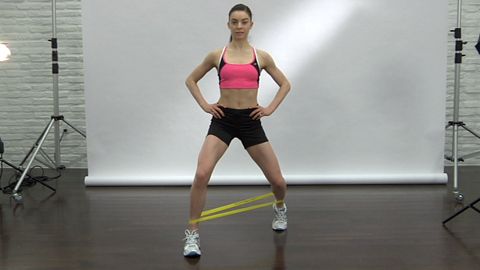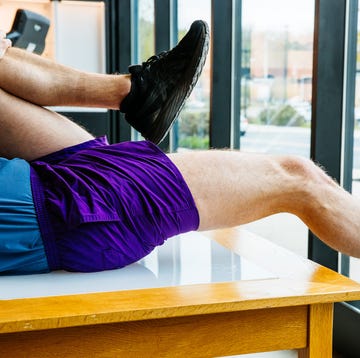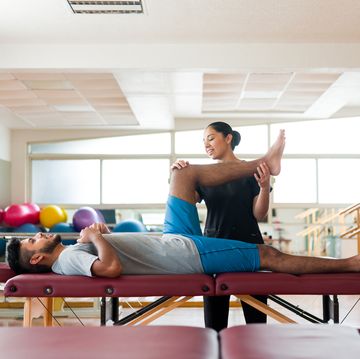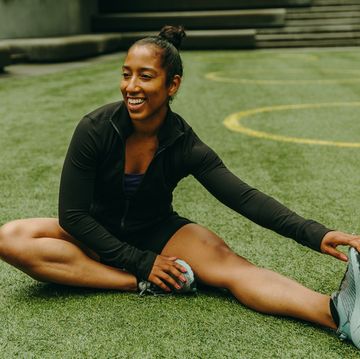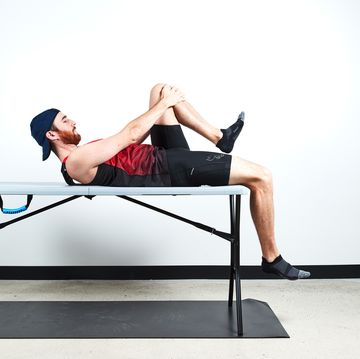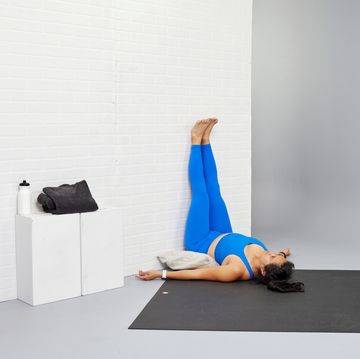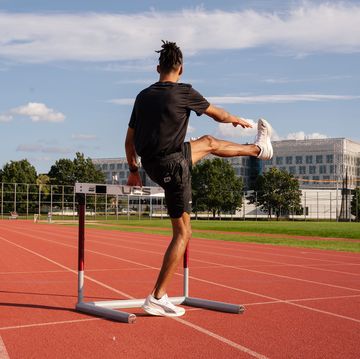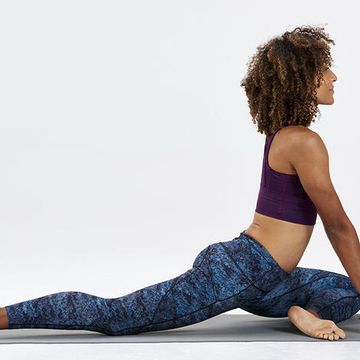Lots of runners lift weights and hit the yoga mat to keep injuries at bay. Increasing strength and flexibility is important, but there's another piece of the injury-prevention puzzle that matters: mobility.
"Mobility refers to range of motion in your joints and how well your body moves through a movement pattern," says Mike Boyle, of Mike Boyle Strength and Conditioning in Woburn, Massachusetts. It's different than flexibility–the terms are often incorrectly used interchangeably, and due to this confusion, many runners mistakenly neglect mobility.
"When you run, you never really fully extend your hips or ankles to bring them through their full range of motion–so running can decrease mobility," Boyle says. "If you don't counteract that, you can develop restrictions that can cause injuries and inhibit performance."
First, take each test to determine your range of motion. Do the mobility exercises that target your weaknesses, and then retest yourself to see if you've improved.
Ankle
Test: With your left foot a few inches from a wall and your right foot behind, drive your left knee to the wall. If your right heel lifts off the ground, your ankle lacks mobility. Test both sides.
Exercise: From the same position, drive your left knee to the wall, keeping your knee tracking in a straight line ahead. Then, move your knee so it tracks toward the outside of your foot. Repeat, tracking the knee toward your big toe. Do 5 reps each of the three ways on both sides.
Hip
Test: Pull your right knee toward your chest while your left leg remains straight and flat on the ground. Let your left leg do what it's inclined to do. If your left knee flexes or your left foot turns out, it's a sign of tight hips. Test the other side.
Exercise: From a push-up position, bring your right foot to the outside of your right arm as you work to drop your right elbow down toward the floor. Do 5 reps on each side.
Knee
Test: Lie with a rope looped around the ball of your right foot. Pull your foot to your right glute. Your heel should touch your glute. It doesn't? Your quads are tight, which means you lack range of motion in the knee. Test both sides.
Exercise: Start on your hands and knees, facing away from a wall. Bend your left knee so that it makes contact with the wall. Stand yourself up so that your right foot is flat on the floor and your right knee is bent at 90 degrees. Hold for 20 seconds, then switch legs and switch sides.
